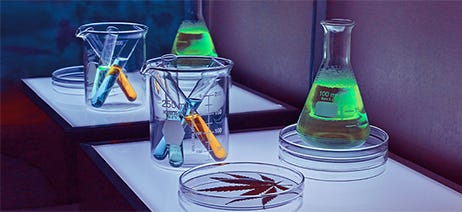
What Are Cannabinoids & How Do They Work?
Cannabis has been around for thousands of years, but we are only now beginning to understand the many chemical compounds that make up this versatile plant. While you’ve probably heard of THC and CBD, you may not be aware of the dozens of other cannabinoids that work together to impact the body in a variety of ways.
In this guide to cannabinoids, we’ll discuss:
- What are Cannabinoids?
- What are the Effects of Cannabinoids?
- What Do Cannabinoids Do?
- What are the Different Types of Cannabinoids?
What are Cannabinoids?
Cannabinoids are naturally occurring molecules made specifically by the cannabis plant, including THCA, CBDA, CBGA, and dozens more. These cannabinoids interact with the body’s natural Endocannabinoid System, a chemical-based biological system that regulates a variety of functions within the body. That range of feelings and experiences you get from consuming cannabis - euphoria, calm, etc. - are the result of cannabinoids binding to your Endocannabinoid System.
What are the Effects of Cannabinoids?
“Because it’s such a hot button issue in our country’s political landscape, there are still very few robust clinical trials confirming what cannabinoids can do for specific conditions,” said Dr. Debra Kimless, a cannabis expert with board-certification in anesthesiologist, pain management, and lifestyle medicine. “Since cannabis is federally illegal, what we thought about cannabinoids began from a rear-view look, meaning we only learned of the effects on a specific person once someone has consumed it recreationally. Now that many states have legal programs, it provides an opportunity to conduct clinical research so we may better understand these unique molecules.”
What Do Cannabinoids Do?
Cannabinoids interact with our body’s endocannabinoid system, as well as with non- endocannabinoid receptors and ion channels to cause different effects–either perceived as beneficial or adverse. For example, Dr. Kimless notes that “a little bit of THC can reduce nausea and vomiting, but too much THC can cause cannabis hyperemesis syndrome, or recurrent episodes of nausea and vomiting. It’s all about finding that balance for your own body.”
Endocannabinoid Deficiency is another area of potential discovery. According to Dr. Kimless, there are instances in which the body is not able to sufficiently manufacture endocannabinoids to maintain regular function, which can lead to negative affects in the body. In fact, it has also been suggested that Endocannabinoid Deficiency could contribute to migraine, fibromyalgia, irritable bowel syndrome, some psychological disorders, and more.
What are the Different Types of Cannabinoids?
You already know that THC and CBD are by far the most well known and studied cannabinoids out there. But there are more than 100 that have been identified, in addition to other phytochemicals.
“CBD was characterized in the 1940s, but it took decades for us to begin to understand its bioactive nature. In the late 2000’s, we began to understand the acid forms of cannabinoids - THCA, CBDA, etc. - as also having an impact on the body. Now we know that they can be bioactive, even when not activated by decarboxylation,” said Dr. Kimless. “All this to say, we are just scratching the surface on how many cannabinoids are available and have the potential to impact our systems.”
The following are a few of the most common cannabinoids you may see highlighted in cannabis products on the market:
THC
THC (delta-9-tetrahydrocannabinol) is one of the more familiar cannabinoids due to the notoriety of its intoxicating effects. How does THC manage to do that? It binds to both CB1 and CB2 receptors, making it the most powerful of the bunch.
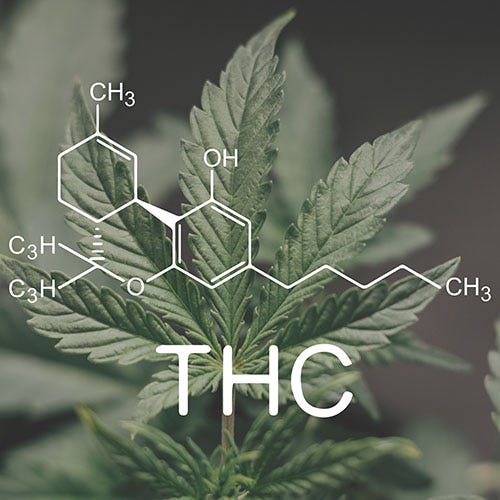

CBD
CBD (cannabidiol) may be the second-most prominent cannabinoid within the cannabis plant, but it’s being used in everything from supplements to smoothies. In fact, the FDA approved CBD as an active ingredient in a treatment for rare forms of Epilepsy (Lennox-Gastaut syndrome and Dravet syndrome), but currently not as a food additive.
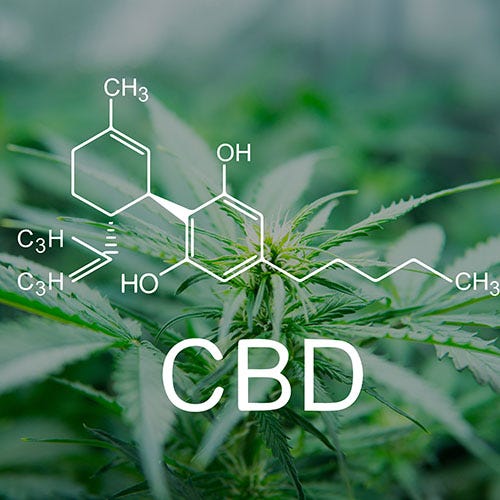

THCA
THCA is the non-psychoactive precursor to THC. This cannabinoid is produced inside the cannabis plant, but it converts to THC when exposed to heat (e.g. lighting the flower). So, if you see THCA on the label, that means you’ll need to heat the product before consuming it.
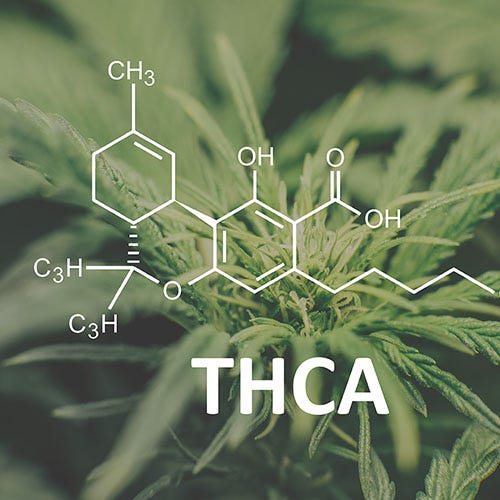

CBN
CBN (cannabinol) can produce an intoxicating response, but only marginally so compared to THC. This is because CBN is actually THC that has been broken down after long-term exposure to heat and oxygen. This is why older marijuana may lose potency as THC decreases and CBN increases.
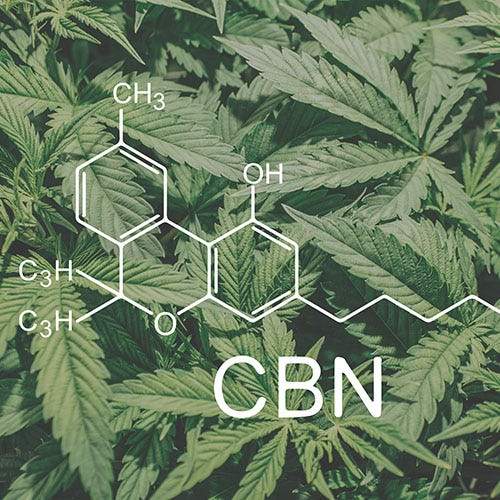

THCV
THCV (tetrahydrocannabivarin) is a psychoactive cannabinoid, but likely only in high doses. It has also been suggested that THCV reduces appetite by blocking one of the cannabinoid receptors.
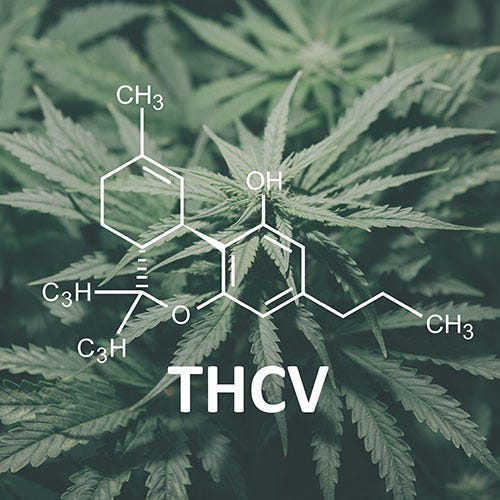

CBC
CBC (cannabichromene) is the second most abundant cannabinoid (after THC) and does not produce intoxicating effects. What makes this compound different from the others is that it doesn’t directly interact with CB1 receptors. Rather, it binds with the lesser-known TPRV1 and TRPA1 receptors within the endocannabinoid system.
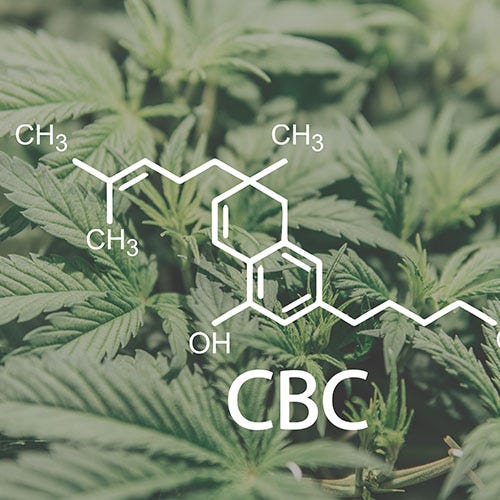

CBG
CBG (cannabigerol) is only found in trace amounts in the cannabis plant, but its precursor is CBGA, the foundational molecule for all other cannabinoids. A non-intoxicating compound that binds directly to both the CB1 and CB2 receptors, we we still don’t know much about CBG and its potential.
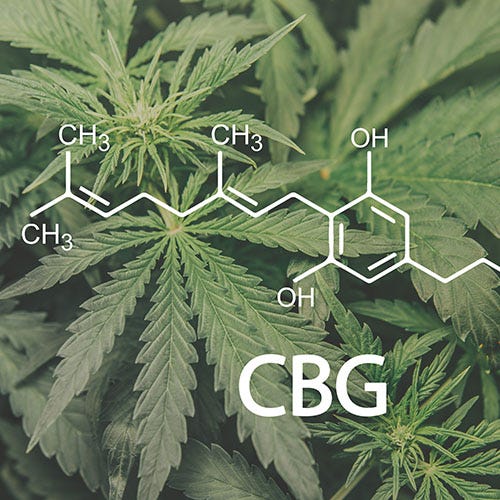

CBDV
CBDV is a naturally occurring compound found in cannabis plants, particularly those with higher levels of CBD. It is structurally similar to CBD, and it doesn't produce intoxicating effects.
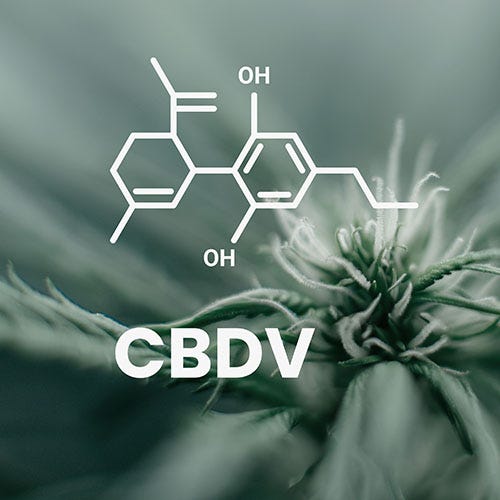

Cannabinoids & Cannabis
“There’s a ton of research coming on board about cannabinoids, but it will take awhile for that to translate to what’s available in dispensaries,” said Dr. Kimless. “For now, it’s important to listen to how your body reacts to various cannabinoids when consuming cannabis to find the right balance for you.”
About Debra Kimless, M.D.
Debra Kimless, M.D., is the Chief Medical Advisor for PharmaCann, overseeing the company’s medical cannabis program. As a board-certified anesthesiologist, pain medicine, and lifestyle medicine physician, she focuses on educating audiences about the benefits of cannabis. Dr. Kimless graduated magna cum laude, Phi Beta Kappa from Muhlenberg College, and earned her M.D. at Rutgers University. She then completed her anesthesiology residency at Temple University.
Connect with Debra Kimless


